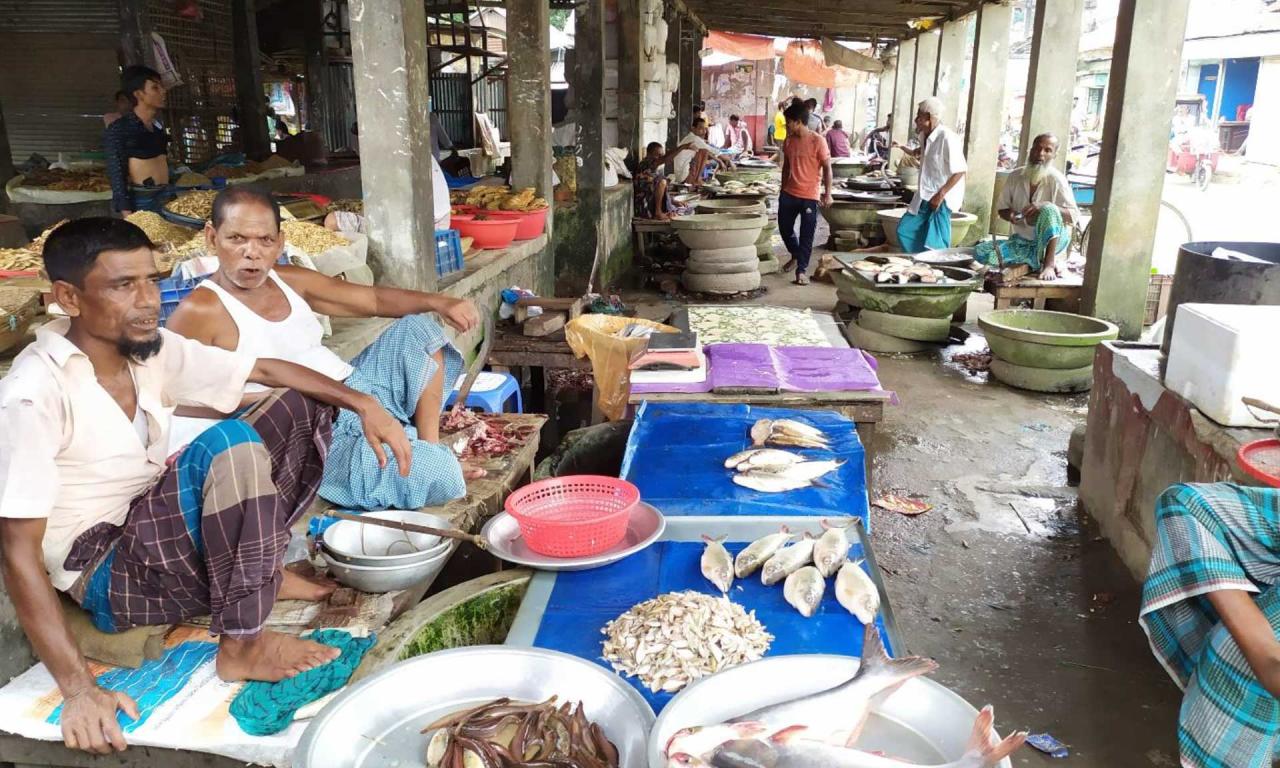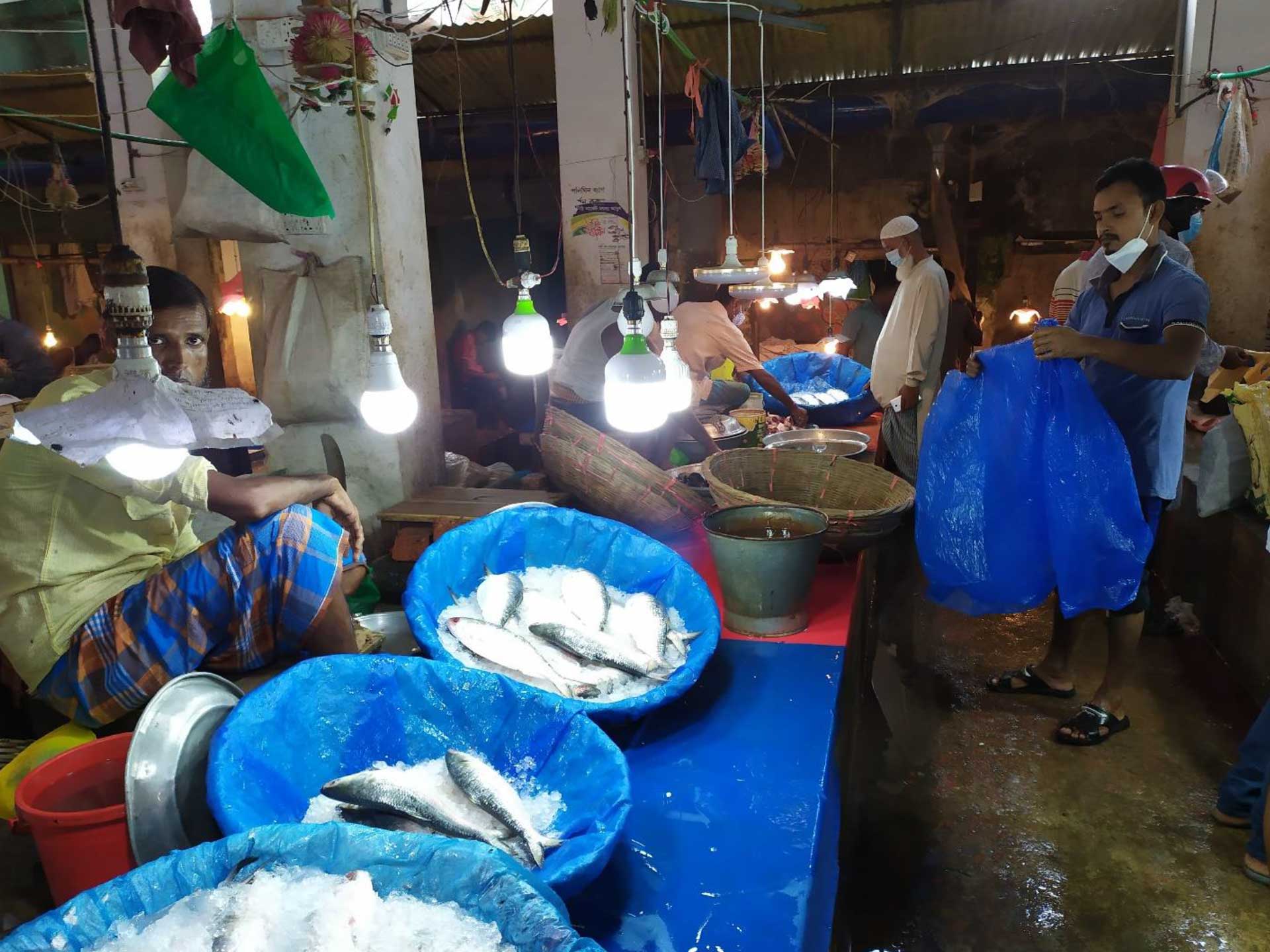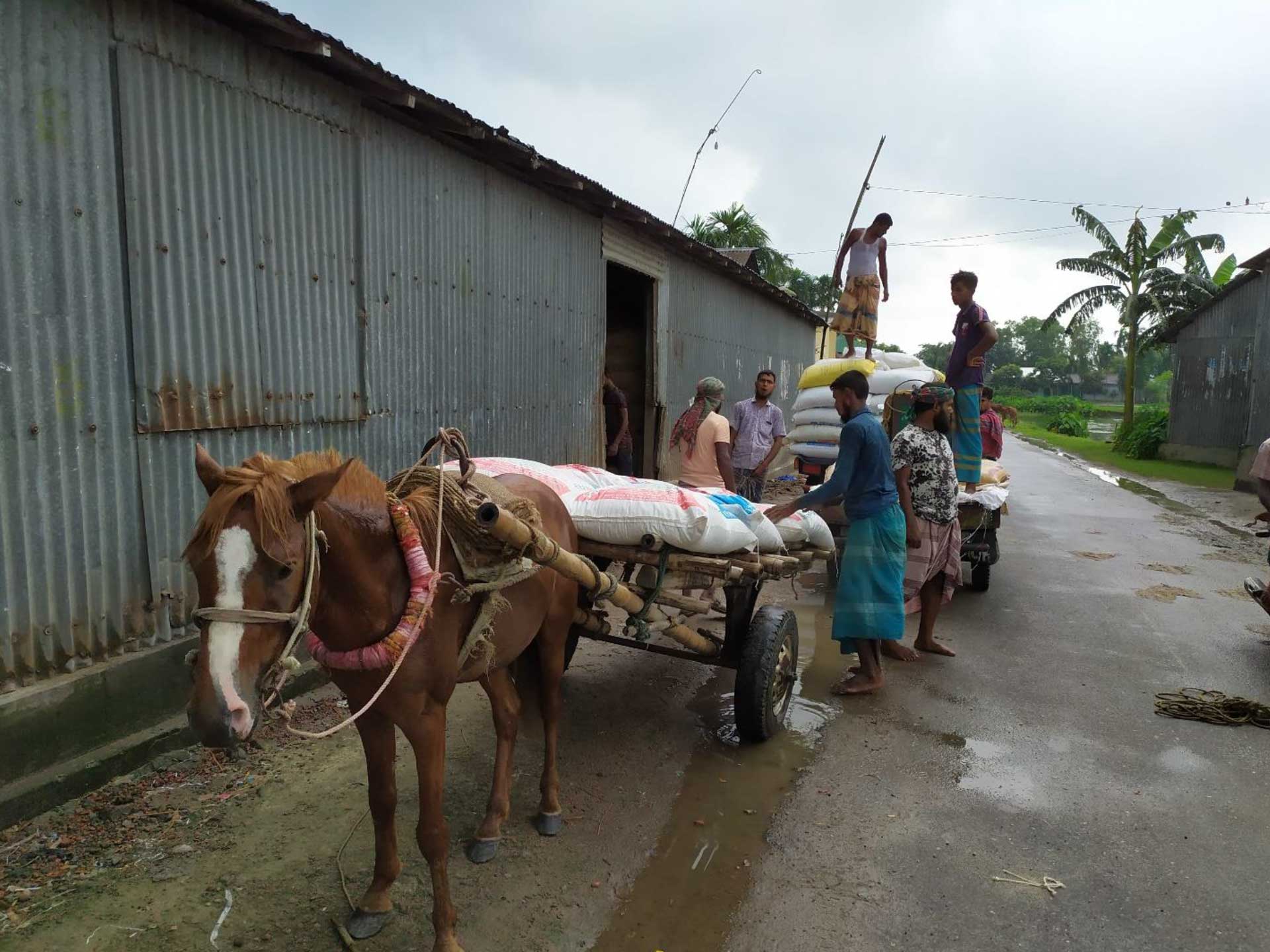
Aquaculture has expanded rapidly in Bangladesh in recent years, becoming increasingly intensive and supporting large increases in the domestic consumption of farmed fish. This growth trajectory has been interrupted by the COVID-19 pandemic. Aquaculture supply chains and trade have been disrupted by transportation bottlenecks and movement restrictions for workers, causing fish farm output to shrink. Lockdowns have placed limitations on restaurants and dining out, and lower incomes have reduced purchasing power, also impacting demand for fish.
A recent paper published in Marine Policy by the two first authors of this blog examines the impacts of COVID-19 on the finfish aquaculture industry in Mymensingh district, the heartland of commercial aquaculture in Bangladesh. Similar to many other rcountries, the impacts of lockdowns instituted to control the transmission of the COVID-19 virus have been felt by everyone in the aquaculture supply chain. The scale of this challenge is illustrated by words of Mr. Azgar Ali a retailer in Mymensingh retail fish market, interviewed during May 2020, who reported:
“Before the COVID-19 pandemic, I could sell fish worth forty- to fifty-thousand taka1 daily, but now it is about twenty- to twenty-five thousand taka or maximum thirty thousand taka”.
We surveyed 40 farmers and 55 consumers in Mymensingh to better understand the nature of changes induced by COVID-19. We found that COVID-19 altered the structure and organization of mid-stream and downstream segments of the aquaculture supply chain (traders, fish transporters, and retailers) and negatively impacted fish farmers and consumers, while some marketing intermediaries were able to benefit from the changing situation.

Changes affecting supply chains
The mid-stream of supply chains was significantly restructured as a result of COVID-19. PreCOVID-19, the chain was dominated by a relatively small number of large traders who purchased fish directly from farmers in Mymensingh to sell to major markets in the big cities. Farmers also made informal overland exports to neighboring India, facilitated by agents from both countries (Figure 1). During the pandemic, a new trend emerged. Transport restrictions hindered deliveries of fish from farms to cities and overland to India, causing many larger traders to stop buying from local farmers. This caused a surplus of fish in Mymensingh markets, depressing the price.

Local oversupply of fish and the withdrawal of large established traders from the market led to the emergence of a new type of trader. These actors are referred to locally as ‘mask-middlemen’ because they wear face masks for protection from COVID-19. We found that most mask middlemen had lost their regular jobs due to the pandemic and moved back to their hometowns, taking up fish retailing as a temporary occupation to support themselves. They act as retailers and/or wholesalers depending on circumstances, mainly buying and selling in the local market, but sometimes seizing the opportunity to shift their consignments to other districts when restrictions on transport and movement of goods are relaxed. These reconfigurations in the supply chain are illustrated in Figure 1.
Prior to the COVID pandemic, established traders offered competitive prices to farmers to generate high turnover, but local oversupply during the pandemic gave rise to a buyers’ market in Mymensingh, causing farmers to sell fish at considerably lower prices than they had done prepandemic.

Changes affecting producers and consumers
COVID-19 reduced demand for fish, negatively impacting farmers. At the same time, the costs of production, including feed, medicine, and labor, all increased, squeezing producer margins (Figure 3). The cost of feed and medicines rose due to dependence on imported raw materials, and expenditures on these items increased as farmers delayed harvesting due to low demand, causing production cycles to be extended. Labor costs increased due to labor shortages and restrictions on movement. Production costs jumped between 7-14% for all species during the first wave of the pandemic. Local retail prices for carps and pangasius increased by 8.8% and 11.9%, respectively, but this was insufficient to offset increased production costs. Retail prices of tilapia and other catfish fell by 4% and 9% respectively, slashing profits.

A pangasius farmer from Muktagacha Upazila of Mymensingh, Mr. Faridul Islam, explained the situation as follows:
“At present the fish price is very low in the fish market, we cannot sell the fish. We are feeding the fish even though we are in debt of purchasing feed from local feed dealers… In our village, most of the farmers did not sell fish due to the low price in the market. That is why farmers have to feed the unwanted stocked fish in the pond, thus the price of fish feed in the market has increased”.
Our survey of consumers revealed that pre-COVID, fish was reported as the main animal source of food consumed by 85% of respondents. At the time of our interviews during the pandemic, this share decreased to 62%. Among the 23% of consumers who changed to another animal food, most increased egg consumption, followed by chicken and beef. However, fish generally remained a staple in the daily diet.

What can be done?
Like many other developing countries, Bangladesh has been hit hard by COVID-19 and measures to contain its spread, with severe negative implications for the food security of millions of people. Bangladesh has made much progress reducing food and nutrition insecurity in recent years, but roughly 40 million people remain food insecure and 11 million still suffer from acute hunger, and are extremely vulnerable to shocks like the COVID-19 pandemic. Although fish remains a key element of the daily diet in Bangladesh, the aquaculture sector has been severely impacted by COVID-19 containment measures. We propose the following measures to help secure the livelihoods of aquaculture farmers and maintain consumer access to fish.
Short-term measures
- The Department of Fisheries (DoF) can promote COVID-secure working practices on farms, and direct farmers to sources of financial and other assistance to help stabilize their businesses. This could be done via an app or other digital platform, promoted at field level by Upazila Fisheries Officers (UFO).
- Ensure farmer’s access to interest-free or low-interest bridging loans to enable them to maintain business operations and enable the stocking of a new crop for next year. Such loans would provide financial relief for farm worker’s wages thereby reducing job losses and protecting future growth in the sector.
- Promote the concept of “compensatory feeding” to reduce production costs. This strategy involves restricting the amount of feed given to stocked fish, followed by overfeeding which causes them to eat more than usual, increasing the growth rate.
- A growing scientific literature suggests that there is a relationship between Vitamin D deficiency, poor immunity, and COVID-19 infection and fatality in humans. Fish, including freshwater farmed fish, is a richer source of vitamin D than eggs, meat, or mushrooms. Raising awareness of the importance of fish as a source of vitamin D via social, electronic, and print media could help to increase fish consumption in Bangladesh, as well as increasing demand for farmers’ products.
Medium-term measures
- Develop digital marketplaces and home delivery services that link consumers directly with local producers, to stabilize demand, demonstrate product provenance for the consumer, and maintain a COVID-19 safe supply chain.
- Provide advice to farmers on adapting culture techniques by modifying the composition of species in polyculture to reduce feed costs and other operating costs. Combining multiple species in polyculture can reduce the dependence on expensive imported feed, particularly when stocking indigenous carp with pangasius and tilapia.
Long-term measures
- Most finfish farmers are not formally organized. Establishing an aquaculture farmer association could increase their influence on government decision-making. The association could operate in a similar manner to the Bangladesh Frozen Food Exporters Association, which supports the export-oriented seafood sector. This would help to secure farmers’ access to the BDT 500 million aquaculture sector stimulus package announced by the Government of Bangladesh.
- Local government could support the development of processing companies to add value, reduce problems associated with product perishability and fluctuating supply and demand, and create local employment.
Neaz A. Hasan1, M. Mahfujul Haque1, Bianca Haas2, Ben Belton2
1Department of Aquaculture, Bangladesh Agricultural University, 2WorldFish
